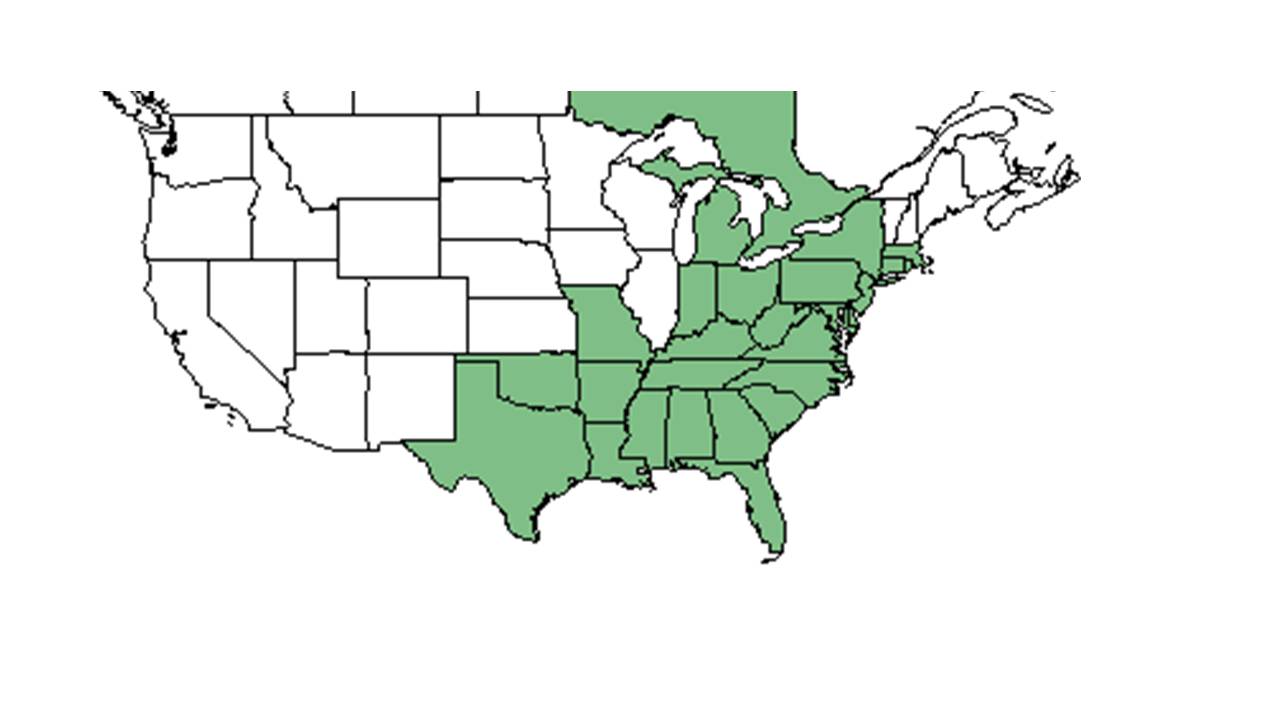Difference between revisions of "Piptochaetium avenaceum"
(→Ecology) |
Krobertson (talk | contribs) |
||
| Line 28: | Line 28: | ||
==Ecology== | ==Ecology== | ||
===Habitat=== <!--Natural communities, human disturbed habitats, topography, hydrology, soils, light, fire regime requirements for removal of competition, etc.--> | ===Habitat=== <!--Natural communities, human disturbed habitats, topography, hydrology, soils, light, fire regime requirements for removal of competition, etc.--> | ||
| − | In the Coastal Plain in Florida and Georgia, ''Piptochaetium avenaceum'' is found in live oak groves, open sandy ridges, mesic coastal hammocks, woodland openings, floodplain edges, along creeks, lake slopes, upland mixed forests, mixed pinewoods, open mixed woodlands, annually burned savannas and pine-oak, open stand of shrubs and trees of ''Ilex vomitoria'', and floodplains | + | In the Coastal Plain in Florida and Georgia, ''Piptochaetium avenaceum'' is found in live oak groves, open sandy ridges, mesic coastal hammocks, woodland openings, floodplain edges, along creeks, lake slopes, upland mixed forests, mixed pinewoods, open mixed woodlands, annually burned savannas and pine-oak, open stand of shrubs and trees of ''Ilex vomitoria'', and floodplains. <ref name="FSU Herbarium">Florida State University Robert K. Godfrey Herbarium database. URL: [http://herbarium.bio.fsu.edu http://herbarium.bio.fsu.edu]. Last accessed: July 2015. Collectors: Loran C. Anderson, K. MacClendon, T. MacClendon, Robert K. Godfrey, K. Craddock Burks, Jean W. Wooten, Swallen, George R. Cooley, Joseph Monachino, Gary R. Knight, Brenda Herring, Don Herring, Richard S. Mitchell, H. Kurz, Patricia Elliot, R. Komarek, R. A. Norris, Matt Hils, Annie Schmidt. States and Counties: Florida: Alachua, Calhoun, Escambia, Gadsden, Hernando, Holmes, Jackson, Jefferson, Leon, Liberty, Nassau, Okaloosa, St. Johns, Suwannee, Wakulla. Georgia: Grady, Thomas. Compiled by Tall Timbers Research Station and Land Conservancy.</ref> Human disturbed areas include roadsides, recreation areas, nature trails, stands of old field pines cleared of underbrush, and along city roads. It has been observed to grow in dry loamy sand, sandy soils, limestone outcrops, calcareous slopes and moist loamy sands. <ref name="FSU Herbarium"/> |
| − | Associated species include ''Melica mutica, Festuca, Erigeron, Verbena, Vitis rotundifolia, Rubus trivialis'' and ''Ilex vomitoria'' | + | Associated species include ''Melica mutica, Festuca, Erigeron, Verbena, Vitis rotundifolia, Rubus trivialis'' and ''Ilex vomitoria.'' <ref name="FSU Herbarium"/> |
===Phenology=== <!--Timing off flowering, fruiting, seed dispersal, and environmental triggers. Cite PanFlora website if appropriate: http://www.gilnelson.com/PanFlora/ --> | ===Phenology=== <!--Timing off flowering, fruiting, seed dispersal, and environmental triggers. Cite PanFlora website if appropriate: http://www.gilnelson.com/PanFlora/ --> | ||
| − | ''P. avenaceum'' flowers and fruits March through May | + | ''P. avenaceum'' flowers and fruits March through May. <ref name="FSU Herbarium"/> |
<!--===Seed dispersal===--> | <!--===Seed dispersal===--> | ||
<!--===Seed bank and germination===--> | <!--===Seed bank and germination===--> | ||
| Line 48: | Line 48: | ||
==References and notes== | ==References and notes== | ||
| − | |||
Revision as of 18:23, 5 August 2016
| Piptochaetium avenaceum | |
|---|---|

| |
| Photo by Guy Anglin, Atlas of Florida Vascular Plants | |
| Scientific classification | |
| Kingdom: | Plantae |
| Division: | Magnoliophyta - Flowering plants |
| Class: | Liliopsida – Monocotyledons |
| Order: | Cyperales |
| Family: | Poaceae ⁄ Gramineae |
| Genus: | Piptochaetium |
| Species: | P. avenaceum |
| Binomial name | |
| Piptochaetium avenaceum (L.) Parodi | |

| |
| Natural range of Piptochaetium avenaceum from USDA NRCS Plants Database. | |
Common name: blackseed speargrass
Contents
Taxonomic notes
Synonym: Stipa avenacea Linnaeus
Description
Distribution
Ecology
Habitat
In the Coastal Plain in Florida and Georgia, Piptochaetium avenaceum is found in live oak groves, open sandy ridges, mesic coastal hammocks, woodland openings, floodplain edges, along creeks, lake slopes, upland mixed forests, mixed pinewoods, open mixed woodlands, annually burned savannas and pine-oak, open stand of shrubs and trees of Ilex vomitoria, and floodplains. [1] Human disturbed areas include roadsides, recreation areas, nature trails, stands of old field pines cleared of underbrush, and along city roads. It has been observed to grow in dry loamy sand, sandy soils, limestone outcrops, calcareous slopes and moist loamy sands. [1]
Associated species include Melica mutica, Festuca, Erigeron, Verbena, Vitis rotundifolia, Rubus trivialis and Ilex vomitoria. [1]
Phenology
P. avenaceum flowers and fruits March through May. [1]
Conservation and management
Cultivation and restoration
Photo Gallery
References and notes
- ↑ 1.0 1.1 1.2 1.3 Florida State University Robert K. Godfrey Herbarium database. URL: http://herbarium.bio.fsu.edu. Last accessed: July 2015. Collectors: Loran C. Anderson, K. MacClendon, T. MacClendon, Robert K. Godfrey, K. Craddock Burks, Jean W. Wooten, Swallen, George R. Cooley, Joseph Monachino, Gary R. Knight, Brenda Herring, Don Herring, Richard S. Mitchell, H. Kurz, Patricia Elliot, R. Komarek, R. A. Norris, Matt Hils, Annie Schmidt. States and Counties: Florida: Alachua, Calhoun, Escambia, Gadsden, Hernando, Holmes, Jackson, Jefferson, Leon, Liberty, Nassau, Okaloosa, St. Johns, Suwannee, Wakulla. Georgia: Grady, Thomas. Compiled by Tall Timbers Research Station and Land Conservancy.